UK CPI accelerated to 0.7% yoy in January, up from 0.6% yoy, above expectation of 0.5% yoy. Core CPI was unchanged at 1.4% yoy, above expectation of 1.3% yoy. RPI also accelerated to 1.4% yoy, up from 1.2% yoy, above expectation of 1.2% yoy. PPI input came in at 0.7% mom, 1.3% yoy. PPI output was at 0.4% mom, -0.2% yoy. PPI output core was at 0.3% mom, 1.4% yoy.
Gold completes head and shoulder top, how low will it go?
Gold’s decline from 2009.26 continued today and the break of 1969.67 support completed a head and shoulder top pattern (ls: 1997.00, h: 2009.26, rs: 2003.90). The development suggests that it’s already in correction to the whole rally from 1810.26. Further decline should be seen towards 38.2% retracement of 1810.26 to 2009.26 at 1933.24.
Overall outlook is unchanged that correction from 2062.95 has completed with three waves down to 1810.26. Hence, strong support should be seen from 1933.24, which is close to 55 D EMA (now at 1933.62), to contained downside. Another rally through 2009.26 to retest 2062.95 high should be seen sooner rather than later.
However, sustained break of 1933 support zone, will dampen this above bullish view, and open up deeper fall 61.8% retracement at 1886.27, and possibly below.
BoC keeps rate at 0.25%, QE pace at CAD 3B per week
BoC kept overnight rate unchanged at effective lower bound of 0.25%. Bank rate and deposit rate were held at 0.50% and 0.25% respectively. it also maintain the target pace of QE at CAD 3B per week. It also maintained that rate hike would happen “some time in the second half of 2022”.
The central bank said economic developments have been “broadly in line” with April MPR. While Q1 GDP growth was lower than projected, “the underlying details indicate rising confidence and resilient demand”. Q2 activity was dampened by renewed lockdowns while contact-sensitive jobs were most affected once again.
However, “with vaccinations proceeding at a faster pace, and provincial containment restrictions on an easing path over the summer, the Canadian economy is expected to rebound strongly, led by consumer spending”. Though, there continues to be uncertainty about the new COVID-19 variants. Risks to inflation outlook also “remain relevant”.
German industrial production dropped -0.6% mom, below expectation of 0.3% mom
German industrial production dropped -0.6% mom in July, well below expectation of 0.3% mom. Over the year, production dropped -4.2% yoy. Looking at some details, production in industry excluding energy and construction was down by -0.8%. Within industry, the production of intermediate goods decreased by -0.7% and the production of capital goods by -1.2%. The production of consumer goods showed an increase by 0.6%. Outside industry, energy production was down by -1.3% and the production in construction increased by 0.2%.
BoC drops tightening bias, Canadian Dollar dives
Canadian Dollar dives sharply after BoC kept overnight rate unchanged at 1.75% and drops tightening bias. The accompanying statement concluded by saying that ” an accommodative policy interest rate continues to be warranted”. The “appropriate degree” of accommodation will be evaluated as new data come in . In particular, BoC will monitor “developments in household spending, oil markets, and global trade policy”. The sentence regarding ” future rate increases” was omitted.
Growth forecasts for 2019 was sharply revised lower to 1.2%, down from January projection of 1.7%. 2020 growth forecast was revised slightly lower from 2.1% to 2.0%. Inflation is expected to remain around 2% through 2020 and 2021.
Full statement below.
Bank of Canada maintains overnight rate target at 1 ¾ per cent
The Bank of Canada today maintained its target for the overnight rate at 1 ¾ per cent. The Bank Rate is correspondingly 2 per cent and the deposit rate is 1 ½ per cent.
Global economic growth has slowed by more than the Bank forecast in its January Monetary Policy Report (MPR). Ongoing uncertainty related to trade conflicts has undermined business sentiment and activity, contributing to a synchronous slowdown across many countries. In response, many central banks have signalled a slower pace of monetary policy normalization. Financial conditions and market sentiment have improved as a result, pushing up prices for oil and other commodities.
Global economic activity is expected to pick up during 2019 and average 3 ¼ per cent over the projection period, supported by accommodative financial conditions and as a number of temporary factors weighing on growth fade. This is roughly in line with the global economy’s potential and a modest downgrade to the Bank’s January projection.
In Canada, growth during the first half of 2019 is now expected to be slower than was anticipated in January. Last year’s oil price decline and ongoing transportation constraints have curbed investment and exports in the energy sector. Investment and exports outside the energy sector, meanwhile, have been negatively affected by trade policy uncertainty and the global slowdown. Weaker-than-anticipated housing and consumption also contributed to slower growth.
The Bank expects growth to pick up, starting in the second quarter of this year. Housing activity is expected to stabilize given continued population gains, the fading effects of past housing policy changes, and improved global financial conditions. Consumption will be underpinned by strong growth in employment income. Outside of the oil and gas sector, investment will be supported by high rates of capacity utilization and exports will expand with strengthening global demand. Meanwhile, the contribution to growth from government spending has been revised down in light of Ontario’s new budget.
Overall, the Bank projects real GDP growth of 1.2 per cent in 2019 and around 2 per cent in 2020 and 2021. This forecast implies a modest widening of the output gap, which will be absorbed over the projection period.
CPI and measures of core inflation are all close to 2 per cent. CPI inflation will likely dip in the third quarter, largely because of the dynamics of gasoline prices, before returning to about 2 per cent by year end. Taking into account the effects of the new carbon pollution charge, as well as modest excess capacity, the Bank expects inflation to remain around 2 per cent through 2020 and 2021.
Given all of these developments, Governing Council judges that an accommodative policy interest rate continues to be warranted. We will continue to evaluate the appropriate degree of monetary policy accommodation as new data arrive. In particular, we are monitoring developments in household spending, oil markets, and global trade policy to gauge the extent to which the factors weighing on growth and the inflation outlook are dissipating.
Information note
The next scheduled date for announcing the overnight rate target is May 29, 2019. The next full update of the Bank’s outlook for the economy and inflation, including risks to the projection, will be published in the MPR on July 10, 2019.
ECB Visco : Will asset hot to adjust policy instruments in the coming weeks
ECB Governing Council member Ignazio Visco said the central bank “will need to adopt further expansionary measures if the euro zone economy does not pick up.” And, “in the coming weeks the ECB will continue to assess how to adjust the instruments at its disposal”. This is in-line with market expectations that ECB is ready ramp up monetary stimulus either on July 25 or later in September.
Being Governor of Bank of Italy too, Visco expected the Italian economy to grow just 0.1% this year, marginally below the government’s 0.2% official forecast. Though, he also expected growth to pickup to just slightly below 1% in 2020 and 2021. He urged the government to adopt “prudent” budget deficit targets for the coming years. But he also welcomed recent fall in Italian yields, after EU averted the Excessive Deficit Procedure on the country.
UK Brady predicts PM May to win leadership challenge, but 48 threshold not even met yet
As confirmed by Graham Brady, chair of the 1922 Committee, the number of requests for no-confidence vote on Prime Minister Theresa May haven’t met the threshold of 48 yet. He added, “if a threshold were to be reached I would have to consult with the leader of the party the Prime Minister.” And he expected the “whole thing” to be an “expeditious process”, if it happens.
Also, Brady predicted even if there is a leadership challenge, May is going to win it. He said “it would be a simple majority, it would be very likely that the Prime Minister would win such a vote and if she did then there would be a 12-month period where this could not happen again, which would be a huge relief for me because people would have to stop asking me questions about numbers of letters for at least 12 months.”
However, Brady is also dissatisfied with the May’s Brexit deal and branded it as “tricky”. He predicted that “it certainly doesn’t look like the current agreement will get through [the Commons] unless either the agreement changes or the statement of the political declaration, the future relationship, gives considerably stronger grounds for optimism a bout the nature of the final deal.”
UK PMI composite rises to 54, sustainable path to target inflation not achieved yet
UK PMI Manufacturing fell from 50.3 to 48.7 in April, below expectation of 50.2. PMI Services rose from 53.1 to 54.9, above expectation of 50.2, and an 11-month high. PMI Composite rose from 52.8 to 54.0, also an 11-month high.
Chris Williamson, Chief Business Economist at S&P Global Market Intelligence, stated that UK economy’s rebound from last year’s recession “continued to gain momentum”. He noted that GDP is now growing at an increased quarterly rate of 0.4%, up from 0.3% in the first quarter.
This economic upturn has led to increased hiring, driven further by the rise in the National Living Wage in April. However, these factors have also escalated cost pressures significantly. Although the inflation of selling prices has moderated slightly, the combination of rising costs and solid demand could lead businesses to hike prices in the near future.
“While the improving economic recovery picture is welcome news, the upward pressure on inflation will add to concerns that a sustainable path to below target inflation has not yet been achieved,” he added.
EU expect Eurozone inflation to peak at 2.4% this year
In the Autumn Economic Forecast, European Commission upgraded 2021 GDP growth projection to 5.0% (vs Spring’s forecast of 4.3%). Growth is projected to slow to 4.3% in 2022 (vs 4.4), and then 2.4% in 2023.
HICP inflation is projected to peak at 2.4% in 2021 (vs Spring’s 1.7%), then slow to 2.2% in 2022 (vs prior 1.3%) and then slow to 1.4%.
Valdis Dombrovskis, Executive Vice-President for an Economy that Works for People, said: “This is no time for complacency: we continue to face uncertainty with this virus and there are some risks to contend with. Not least, we need to address bottlenecks in supply chains, as well as surging energy prices which will affect many households and companies across Europe. We also need to closely monitor inflation and adjust our policies if needed.”
Fed discussed updating guidance on asset purchases
Minutes of November FOMC minutes noted that the asset purchases will continue “over coming months”. At the same time, “most participants judged that the Committee should update this guidance at some point and implement qualitative outcome-based guidance that links the horizon over which the Committee anticipates it would be conducting asset purchases to economic conditions. ”
However, “a few participants were hesitant to make changes in the near term to the guidance for asset purchases and pointed to considerable uncertainty about the economic outlook and the appropriate use of balance sheet policies given that uncertainty.”
On adjusting the asset purchases to provide more accommodation if needed, it could be done by increasing the pace of purchases or by shifting its Treasury purchases to those with a longer maturity without increasing the size of its purchases.” Or alternative, more accommodation could be done “by conducting purchases of the same pace and composition over a longer horizon.”
ECB Schnabel: A weak Q4 to spillover to beginning of next year
ECB Executive Board member Isabel Schnabel said in an interview, “in general, I think the recovery continues”. But due to new wave of infections, “we are seeing headwinds in the short term”. ECB is looking at a “weaker fourth quarter” which is “likely to spill over to the beginning of next year”. But she expected “a strong rebound thereafter”. So, “we see the recovery as being delayed rather than derailed.”
She added that the factors that pushed up inflation are “likely to either reverse or at least become less pronounced over the coming year”, including supply bottlenecks, energy prices and base effects. Inflation is going to “decline over the course of next year”, but ECB is “less certain about how fast and how strong the decline will be”.
Schnabel also said ECB is taking a “step-by-step approach to normalization” of monetary policy”. The pace can be adjusted to the incoming data. And, “we need to retain optionality to make sure that we sustainably reach our 2% target.”
ECB Lagarde: Rate hike could be a few weeks after stopping net asset purchases
ECB President Christine Lagarde told Dutch television over the weekend, “we are going to follow the path of stopping net asset purchase. Then, sometime after that — which could be a few weeks — hike interest rates.” That’s seen as an indication that a rate hike could happen in July, after stopping asset purchases in June.
Governing Council member Klass Knot floated the idea of a 50bps hike earlier. But Lagarde said, “it’s not something that I can tell you at this point in time.” She emphasized, “we need to make sure that this is going gradually enough so that we don’t put the break on this car that is moving. We have to lift the accelerator for sure to slow inflation but we cannot be breaking any speed.”
RBNZ Bascand: The economy is somewhere near a turning point
RBNZ Deputy Governor Geoff Bascand said in an interview that “we actually think the economy is somewhere near a turning point.” He admitted the economy is “definitely going through a weaker stage” and “near-term risks “are probably more on the downside, but it’s a question of how long they persist,”
However, he added, “we’ve put a lot of stimulus in. We’ve got a bit longer to see how it’s transmitting. There’s time to see how that plays out and make a call in February if needed.”
The central bank surprised the markets by keeping the OCR unchanged at 1.00% yesterday. Governor Adrian Orr described the decision as a “tough one”, and the monetary policy committee had debated whether to “take one more insurance cut.”
ECB’s Panetta: Conditions for monetary easing are materializing
In a speech delivered in Rome, ECB Governing Council member Fabio Panetta acknowledged the impact of restrictive policies on demand, attributing these measures, alongside the falling energy prices, as key factors in the “rapid fall in inflation”.
More importantly, Panetta highlighted “risks to price stability have diminished”. Hence, and the “conditions are materializing to launch monetary easing.”
Lane: ECB not at policy limit yet, but big conversation on fiscal policy needed
ECB Chief Economist Philip Lane emphasized today that “we don’t think we’re at a limit as of yet” regarding monetary policy. But he also urged “the bigger focus should be rather on what … other policies can contribute to make this limits question less relevant, less interesting because the economy would be growing more quickly.”
Lane added, “Europe needs a big conversation among fiscal policymakers about how to stimulate the economy.” Meanwhile, policy makers “do care about how banks are adjusting to negative interest rates.”
Stocks recovered as Mnuchin will travel to China for trade talks again soon
US stocks recovered mildly overnight, partly due to a technical recovery, and partly cause Trump’s administration tried to tone down trade war with China. DOW ended up 0.82% or 207.06 pts at 25532.05 but was kept well below 55 day EMA at 25690.77. S&P 500 rose 0.80% while NASDAQ rose 1.14%. Both were also capped by 55 day EMA.
Trump said “we’re having a squabble with” China only., and “we have a dialogue going. It will always continue.” Treasury spokesman also indicated that Steven Mnuchin will plan for another meeting with China, without details. The spokesman said: “As the secretary has indicated, the negotiations will continue. We do anticipate, as the secretary indicated yesterday, that we will plan for a meeting in China at some point soon.” However, nothing is heard from Trade Representative Robert Lighthizer yet.
June rate cut plausible, ECB accounts indicate
In the accounts from their April monetary policy meeting, ECB confirmed that it is “plausible” to be in a position to start cutting interest rates as early as June, contingent upon incoming evidence supporting the medium-term inflation forecasts established in March.
ECB members collectively noted that recent data largely upheld the projections made by staff in March, bolstering their “confidence that the disinflationary process was continuing”.
Looking forward, ECB highlighted the importance of upcoming data releases and new staff projections, which are expected before the June meeting. These forthcoming insights will provide a more “comprehensive” basis for decision-making, enabling a fuller assessment of the economic environment and potentially justifying a shift in policy.
New Zealand ANZ business confidence rose to -41.9, inflation expectations rose again
New Zealand ANZ business confidence rose from -51.8 to -41.9 in March. Own activity outlook rose from -2.2 to 3.3. Looking at some details, export intentions rose from 0.9 to 7.9. Investment intentions rose from 4.5 to 5.2. Employment intentions rose from 2.3 to 12.3. Pricing intentions rose from 74.1 to 80.5. Cost expectations rose from 92.0 to 95.9. Inflation expectations rose back from 5.29 to 5.51.
ANZ said: “With inflation pressures now so extreme, and the RBNZ’s inflation-targeting credibility on the line, it’s full steam ahead for rate hikes – we’re forecasting 50bp hikes in both April and May.
“It could well be a rough ride, but maintaining medium-term price stability is the best contribution monetary policy can make to New Zealand’s big-picture economic prospects from this very difficult starting point.”
ECB’s Lane signals confidence in inflation control with slower wage growth ahead
ECB Chief Economist Philip Lane noted at a conference today that while the second half of this year will still witness “plenty of wage increases,” the momentum is expected to taper off significantly.
Lane emphasized that “the catch-up is peaking now,” suggesting that the pace of wage hikes will slow substantially over the next two years.
Lane highlighted the “lot of progress” made in reducing underlying price pressures, pointing out the rising optimism surrounding the anticipated deceleration in wage growth. “This is where the confidence in returning to target comes from,” he added.




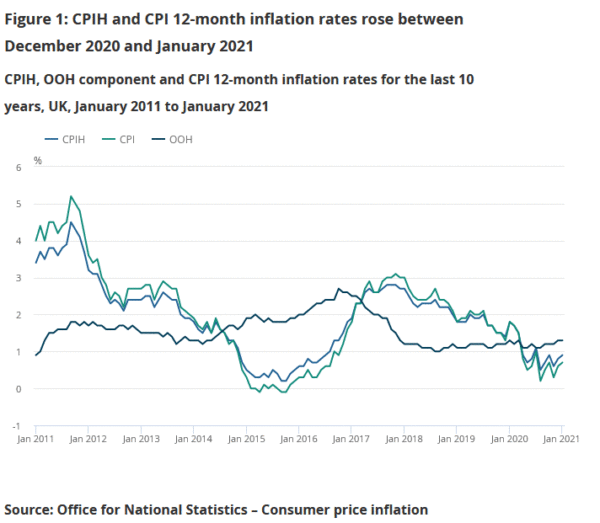
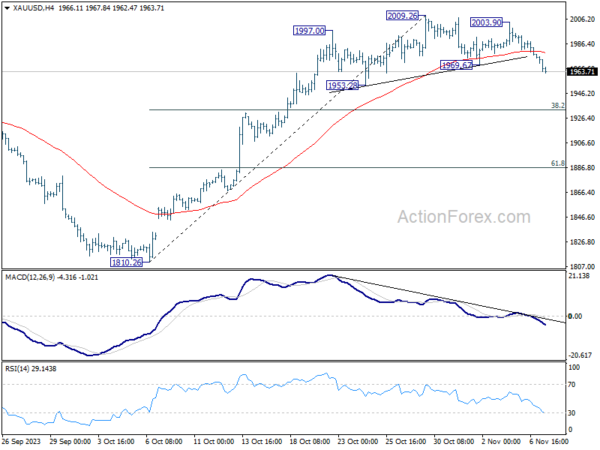
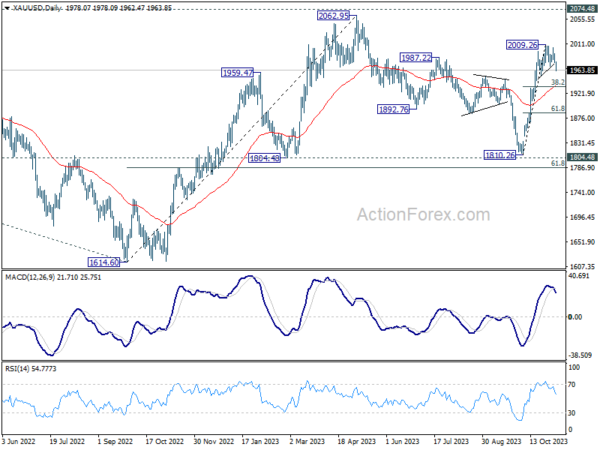
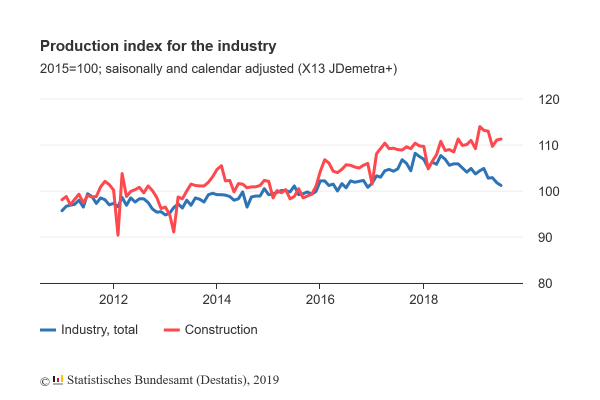
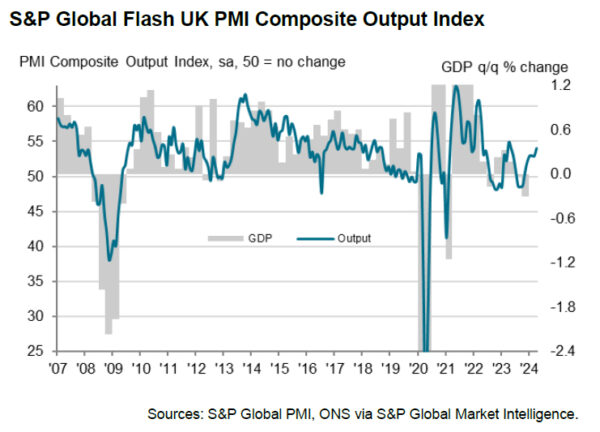
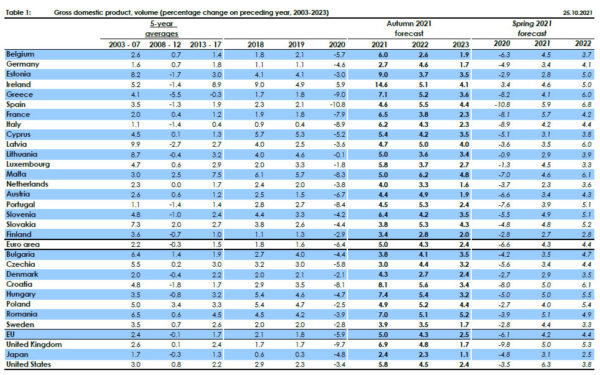
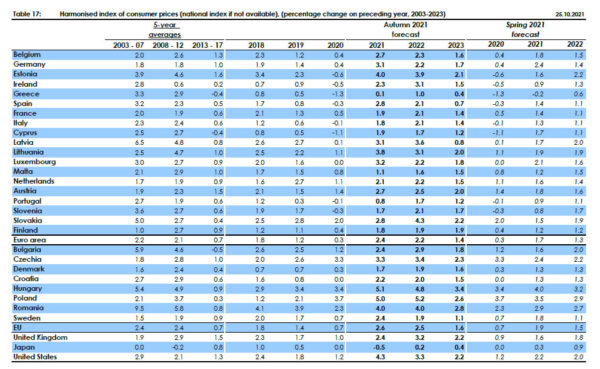
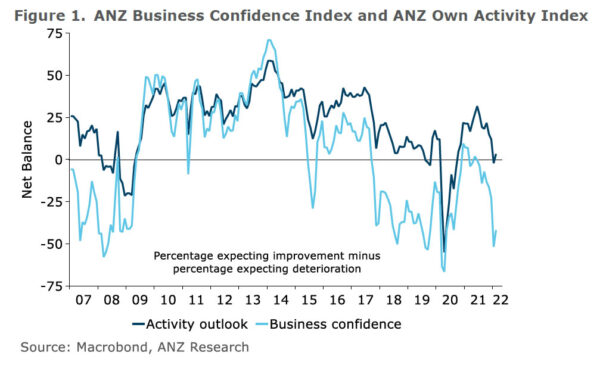

RBA kept cash rate at 0.25%, very large economic contraction expected in Q2
RBA left cash rate unchanged at 0.25% as widely expected. It also reaffirmed the 0.25% target for 3-year government bond yield with asset purchases. The central bank also said that it “will not increase the cash rate target until progress is being made towards full employment and it is confident that inflation will be sustainably within the 2–3 per cent target band.”
RBA also said noted there is “considerable uncertainty” about the near-term outlook of the economy. Much depends on the successful of coronavirus containment and the length of social distancing. Nevertheless, “a very large economic contraction” is expected in Q2 and unemployment is expected to rise to its “highest level for many years”.
Full statement here.